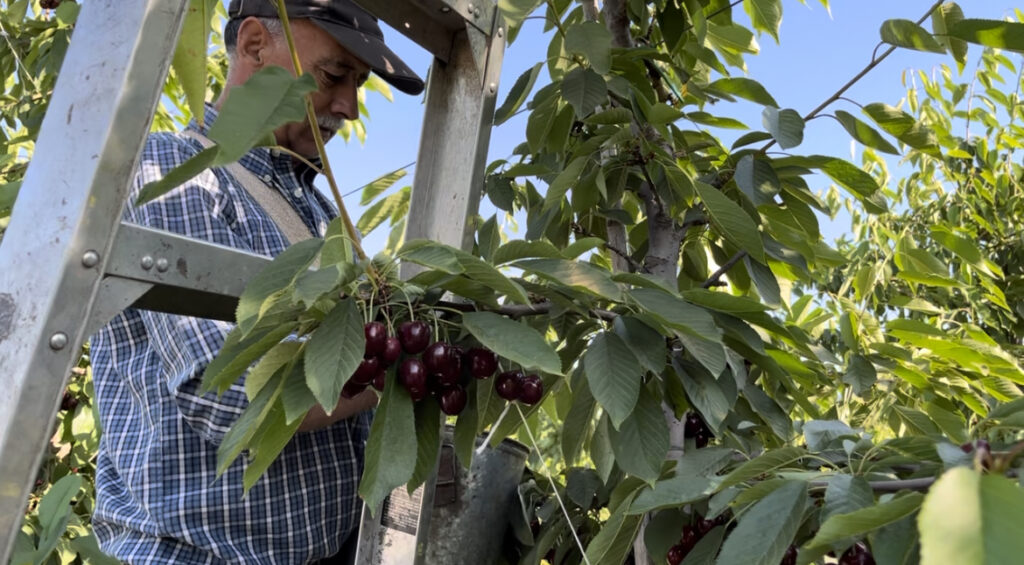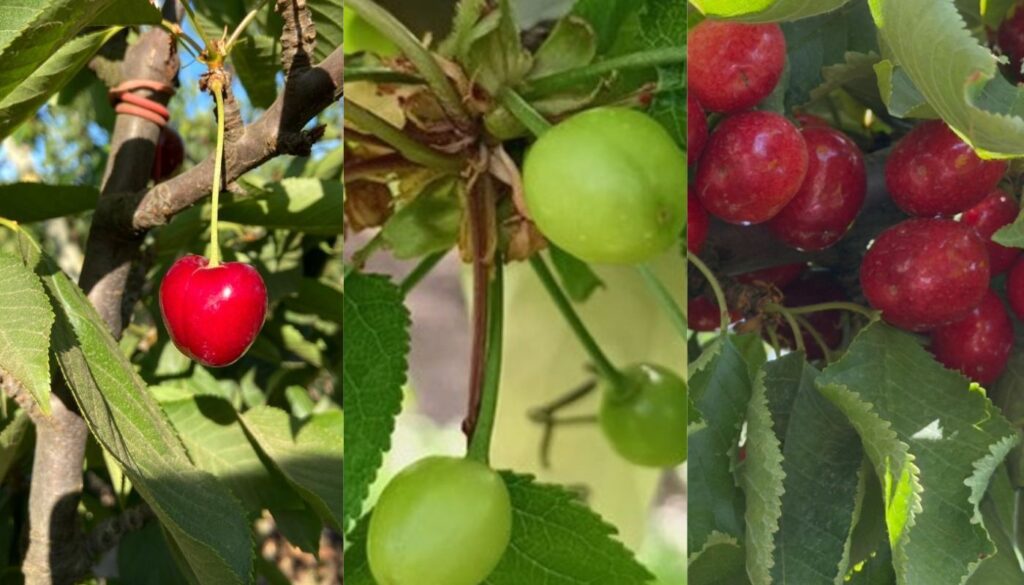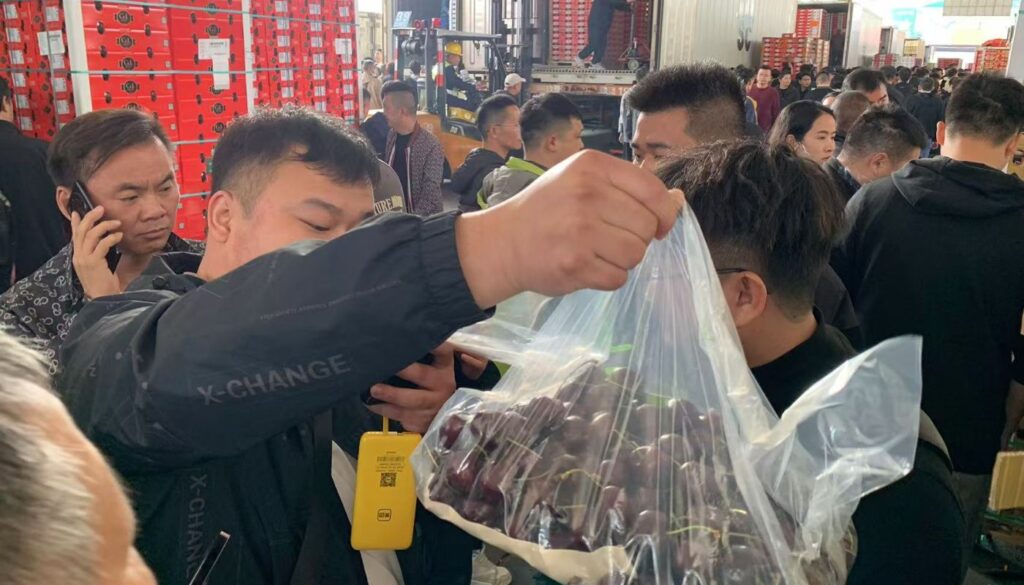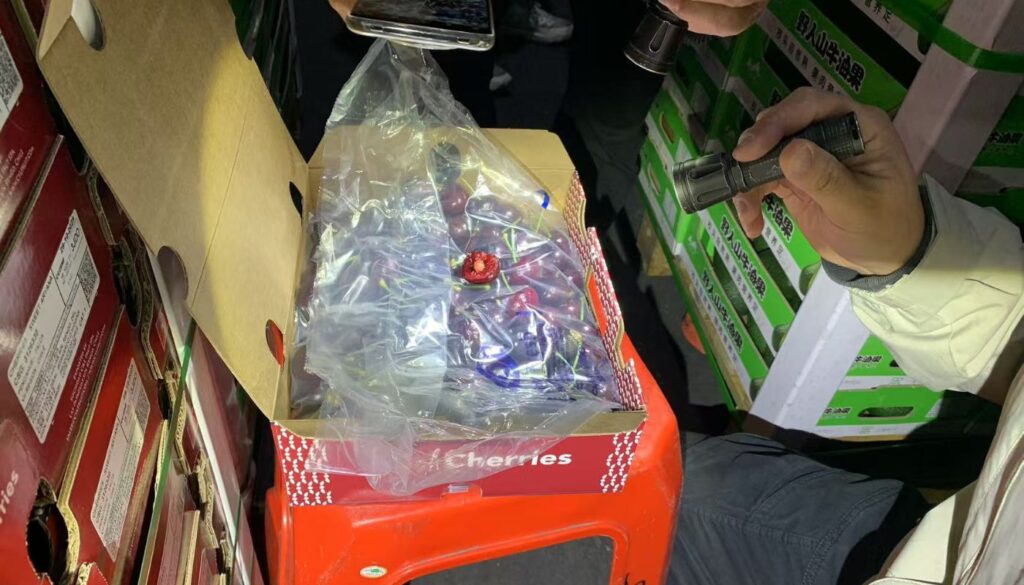
More efficient training systems will have an advantage in maximising worker productivity. However, the choice must be linked to the correct variety/rootstock/training system combination and the correct procedures at the orchard formation stage.
One of the great challenges in cherry production and the establishment of an orchard is to be attractive to the labor force during the harvest. The cherry harvest is a short and intense period, where a large quantity of fruit must be collected in a short time.
This does not necessarily mean that an orchard has to have a high planting density and pedestrian systems, but it does have great potential for good quality fruit and is comfortable for the pickers.
In 2019, Chile has around 50 thousand hectares planted and an average production of approximately 7 tons per hectare, considering harvests older than 4 years. Chile's harvest potential is 240 million kilos per year and practically 70% of that potential is harvested in December. If harvesters collect an average of 150 kilos/day, in our country a workforce of around 45 thousand people is needed just to meet the demand for that period.
It is important to think about what a grower would prefer: a 3.5 metre garden with a ladder, or a 2.6 metre garden where one floor is enough? In the first one he could harvest 150 kilos/day and in the other, more efficient system he could perhaps even exceed 250 kilos/day. His choice will surely be the one where he has to make the least effort to achieve his goal.
“Today in Chile, everything related to orchard technology, as an opinion I think that the 70% of the orchards, perhaps the 75% is based on a traditional orchard system with a central axis, traditional with medium densities ranging from 800 to 1000 plants per hectare. They are classic orchards, not necessarily of low potential or poor quality, but they are classic orchards. These orchards have nothing to envy of more modern orchards in terms of productivity, however, thinking about the future and thinking about the condition, efficiency and scarcity of our labor, they are probably the least friendly orchards for all tasks, not only for harvesting but often also for training work. Today there is a range of possibilities for developing orchards or developing more efficient formations and lower orchards or more compact orchards.”. Said Carlos Tapia, technical director of Avium.
Traditional, high-altitude orchards are no longer found in countries such as Spain, Italy, Germany, Australia, among others, and only exist in places such as the United States and Chile, where the problem of labor supply has not yet arisen, perhaps supported by the fact that regulations allow them to hire temporary labor from other places.
“No training system or management system, in my opinion, is open to criticism. Management systems cannot be criticized from the point of view of training, of efficiency, as long as they meet the objective they require. I do not believe that a Y-shaped orchard has less potential than a KGB or a Central Axis, nor that they have less potential if they are done well. They are different orchards with different proposals. Today it has been proven that all the lower systems such as Ys, UFOs or KGBs are systems that work well, that work, that some can be formed with more complications than others, but that the objective of producing fruit or having a good productive potential with quality fruit is met and is sustained over time. They are trends, ideas, proposals, producers take them, leave them and I personally believe that the producer has a lot to contribute to the decision of the management system. For me it is extremely important that the producer feels comfortable with the management system he is managing. It is not advisable for the producer to take a risk in a system that he probably does not know or that he has many doubts about. There is a style of producer who prefers innovation and I personally thank those who have been kind enough to open up and have these options so that we can develop them, understand them and thus make fewer and fewer mistakes. But the training systems, for my taste, are not criticisable, a central axis is just as valid as the modification of a central axis when implemented in high-density orchards with weaker rootstocks as in the Gisela series, some MadMa 14 as well, the variation of the central axis in the double axis is valid when there is a need to dilute vigor so that the plant has a better balance, the option of making a Y-Trellis with the central axis is valid also with the same objective and to lower the height of the orchard and it is also valid, although it seems more extreme or more abstract, to make a KGB or a UFO-B as long as the systems are made with the precise and correct technique. Tapia added.
Modern, easy, or at least semi-pedestrian, systems will compete with advantage to maximize worker productivity. However, the choice must be related to a correct variety/rootstock/training system combination and to the correct procedures at the orchard formation stage.
“I think that the most efficient driving systems will make them more attractive for the workforce. Many times the driving system is not only adapted to harvest more kilos per person, but also in some cases some have the possibility of being formed in a simpler or faster way and allow the implementation of orchards of large surface areas. There are many KGB projects of 100-150 hectares and thanks to the simplicity that the KGB has to form, they were able to form them very well and with few people. However, when one focuses on the productive issue, the lowest systems, the most efficient systems are the ones that ultimately have greater success in terms of harvest yield.” the expert emphasized.
Bibliographic references
-Carlos Tapia-Personal communication.
-Sweet Cherry Training and Management Systems – Miguel Ellena Dellinger. INIA BULLETIN N° 247.
-“Cherries, botany, production and uses”- Edited by: José Quero-García, Amy Lezonni, Joanna Pulawska and Gregory Lang.







